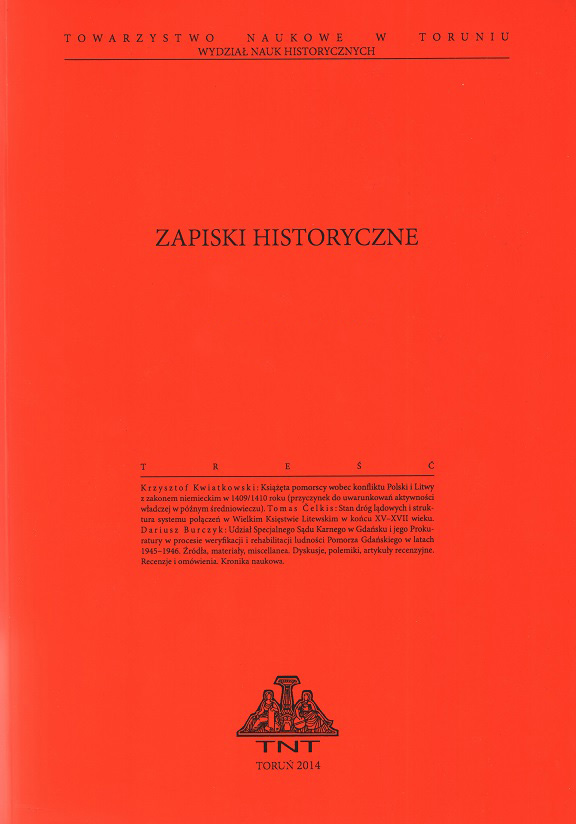Beziehungen der Bischofsstadt Fischhausen zur bischöflichen Residenz
Relations Between the Bishop’s Town Fischhausen (Rybaki) and the Bishop’s Residence
Author(s): Bernhart JähnigSubject(s): History of Church(es), Economic history, Social history, Middle Ages
Published by: Towarzystwo Naukowe w Toruniu
Keywords: bishops;the seat of the bishop;Sambia;
Summary/Abstract: Fischhausen is situated in the northern part of the Vistula Lagoon. It was set up in the territory of the Sambian bishopric. The foundation privilege for this town was issued in 1299 by the bishop Siegfried von Regenstein. The bishop’s castle was also situated there. The bishop of Sambia was the ruler of the town until the period of the Reformation. The first privilege was renewed in a slightly modified form in 1305. The first settlers arrived from Stralsund. In ca. 1305 there existed about forty households there. The first installations included a mill, which had existed even before the town was set up, and an inn. The first town council’s regulation is dated on 1694. Amber was collected in the vicinities of the town, which was later sold to the Grand Steward in Königsberg. It was not until the 16th century that Duke Albrecht, who in 1525 became the ruler of the town, permitted seaborne grain trade. Grain trade was hindered by officials from the neighbouring states. The first guilds appeared in the 16th century – they included mainly clothiers, potters, tailors and shoemakers. In the town there was also a parish church. Not much can be said in reference to the political system of the town. After 1525 the position of the Vogt (mayor) was introduced.
Journal: Zapiski Historyczne
- Issue Year: 82/2017
- Issue No: 2
- Page Range: 41-50
- Page Count: 10
- Language: German

